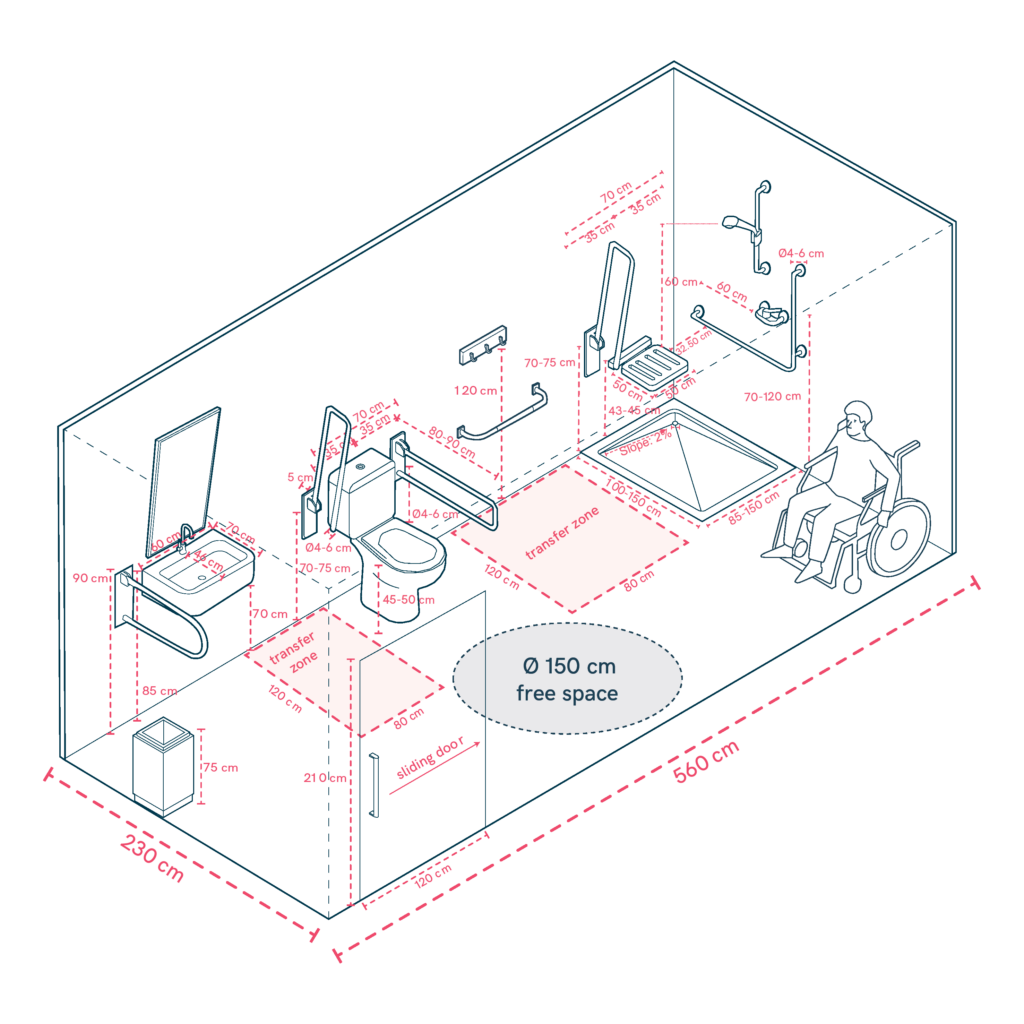Specific toilets
A well-designed bathroom is crucial for safe, dignified care. It should be spacious enough for a hoist to move smoothly, allowing easy transfers between wheelchair, toilet, shower, or tub. The layout must be logical and accessible for both user and caregiver. Non-slip floors, grab bars, good lighting, and ventilation improve safety and comfort. A wide door ensures easy access and privacy. The hoist should reach all key areas for safe transfers. Features like an elevated toilet with armrests, accessible sink, handheld shower, and reachable towel racks support independence and ease daily care. The goal is a safer, easier, and more respectful space for everyone.

- The bathroom should be spacious enough to allow for easy movement of a hoist or crane, enabling smooth transfers. The layout of the toilet, shower, and washbasin should be logical and functional to facilitate patient transfers.
- Install non-slip flooring to prevent falls, and position grab bars in strategic locations for the patient’s safety and security. Ensure the bathroom is well-lit and ventilated to improve mobility and reduce humidity and odors.
- The door width should be wide enough for two people to pass through comfortably, allowing for privacy while ensuring the caregiver can exit when needed. The hoist must have access to all bathroom areas, positioned to allow for safe transfers from the bed or wheelchair to the toilet, shower, or bathtub.
- Use an elevated toilet with armrests to aid in patient transfers, and ensure the washbasin is accessible for individuals with reduced mobility. A handheld shower should be included for easier washing by the caregiver.
- Include accessible towel racks, hooks, and mirrors for individuals with mobility impairments.
Sources
- https://accessible-eu-centre.ec.europa.eu/content-corner/digital-library/en-172102021-accessibility-and-usability-built-environment-functional-requirements_en
- https://hcma.ca/wp-content/uploads/2018/01/HCMA_Designing-for-Inclusivity_V1-1.pdf
- https://universaldesign.ie/built-environment/building-for-everyone/building-for-everyone-full-series
